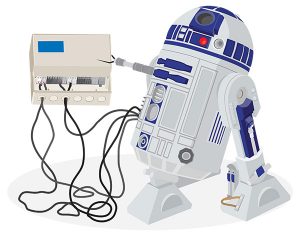
How to solve the top three electrical problems in mechanical systems
March 4, 2019 | By Curtis Bennett
 When I was asked to do an article on three common electrical problems, I thought “What, only three?” Keep in mind that I do come at this from a slightly different angle than an installer might. At my “day job” we design and manufacture controls for residential and commercial buildings.
When I was asked to do an article on three common electrical problems, I thought “What, only three?” Keep in mind that I do come at this from a slightly different angle than an installer might. At my “day job” we design and manufacture controls for residential and commercial buildings.
Sometimes we find these controls in some very weird situations. So, don’t fault me for over simplifying this list as it comes from 15 years of being on the phones and going out to sites and seeing what is actually happening when our controls are wired up. These problems cross many fields and different pieces of electrical equipment.
Number 1: “R2-D2, you know better than to trust a strange computer!”
We do not all have an R2-D2 handy to help us out with installations. He is not there guiding us to cut the right wire or press the right button, but there is something else just as valuable: READ THE MANUAL. I know I said that this might be an oversimplification but READ THE MANUAL. It is there for a reason. It takes time to read it and we sometimes think we don’t have the time but this is the one thing you can do when installing controls to actually save time.
We have countless people call in and it is very clear they do not read the manual. This easy step does save a lot of headaches. I am as guilty as others and have done my share of not reading but at the end of the day this is my number one pick. Manuals are usually packed full of sample electrical drawings with troubleshooting guides in the back.
Number 2: Check the flux capacitor
If you do not know what a flux capacitor is then you are probably too young and don’t appreciate a good movie. Simply put: CHECK THE POWER. What do you do after you have read the manual and everything is hooked up properly but you still have a blank screen? Start by checking the breaker. After that get out the volt meter and actually check the power, at the pins on the control.
Too many times I have seen the power get checked at the electrical box under the assumption that there was power at the control. Check the source first, then check the end point (pins at the control). If you have power at the unit and still nothing, keep moving through the power circuit to the fuse. Most controls are moving towards resettable fusing but there are still some with one-time fuses. Look in the manual and see if they are changeable. If the fuses are resettable you may need to just kill the power for 30 seconds and allow the fuse to reset itself from the fault condition. They do not always reset on their own.
Number 3: If you can’t stand the heat get out of the kitchen
That was literally all I could come up with for this one. The controls in our industry are “generally” temperature driven. This means without temperature inputs the control is not going to do what you expect. This almost made number one because it is the most frustrating issue, not only to me but to installers out in the field. Thankfully many controls now indicate a temperature fault or error on the screen, which makes life even easier as it tells you which one.
That being said we have still had many calls to ask what is wrong with the control. This is where we always ask what the screen says. If the control is not doing what you expect, and it has power this is the next step. What are we looking for? Start by testing the thermistor. How do you do that? You need to grab your volt meter and put it on ohms.
You cannot test resistance while it is connected to the control. You have to remove it, and here we go again, look in the manual to find the resistance curve. Test the resistance and check it against the curve. If you are showing the correct resistance, tug on the wire a bit, a broken wire can be very hard to find. Outdoor sensors are even more susceptible than others because they are, well, outside. In this case if you are not getting the proper resistance at the control side of the wiring, there is usually a lot of wire between the control and the actual outdoor sensor, so also check it right at the outdoor sensor box. If you get a good resistance reading at the source then you know your wiring is bad–somewhere.
And finally, Number 4: If at first you don’t succeed, try, try again. See number 1. <>
Curtis Bennett C.E.T is product development manager with HBX Control Systems Inc. in Calgary, AB. He formed HBX Control Systems with Tom Hermann in 2002. Its control systems are designed, engineered and manufactured in Canada to accommodate a range of hydronic heating and cooling needs commonly found in residential, commercial and industrial design applications.




